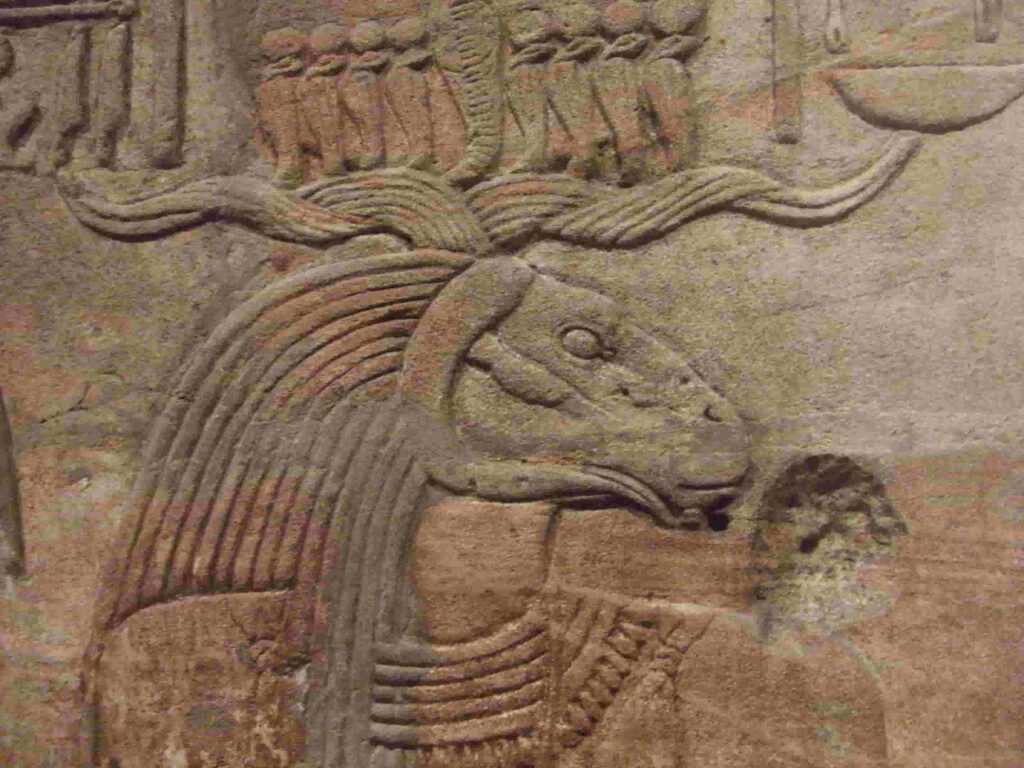Khnum, one of ancient Egypt’s most ancient deities, revered for his shaping abilities, held a special place of veneration in Esna, the capital of Upper Egypt, also known as Latopolis in Greek lore.
According to ancient Egyptian mythology, dating back to 3,000 years BC, Khnum, in collaboration with Ptah and under the guidance of Thoth, played a pivotal role in the creation narrative.
Not only was he credited with shaping the entire universe from a primordial egg, but he also took on the responsibility of crafting human beings, molding them from clay on a potter’s wheel.
Using this lathe, Khnum fashioned both the physical bodies of people and their ka, one of the vital essences of each human being. Unlike the ka, the ba was a pure spirit, while the ka took on the form of the being it inhabited, akin to an astral body.
Khnum’s creation of the ka bestowed upon humans a semblance of immortality, imbued into them at birth. Legend tells of Khnum’s weariness with the relentless task of creation, leading him to shatter his potter’s wheel. However, in a stroke of divine ingenuity, he scattered the fragments into the uteruses of women, thus transferring the role of creation to them.
Myths often contain elements of historical truth. From the myth of Khnum, we glean insights into the history of ceramics. It suggests that the potter’s wheel was utilized in ancient Egypt for at least 5,000 years, dating back to the creation of humans by Khnum.
The iconography associated with Khnum includes the head or horns of a ram, holding the Ankh (cross of life) in the left hand, and the Uas scepter (a long staff ending in a fork and topped with an inclined “T” resembling a stylized bird head) in the right hand.
Khnum is occasionally depicted wearing the white crown of Upper Egypt, known as the Hedjet, a symbol also worn by other deities like Osiris.
In ancient Egypt, different gods were worshiped in various regions, and the myths surrounding the creation of humans and gods often varied and sometimes contradicted each other.
For instance, while some traditions attribute the rebuilding of Osiris to Anubis and Nephthys, who later impregnates Isis with his divine essence to conceive Horus, other myths credit Khnum with creating Horus, assisted by Isis who provides divine strength symbolized by the Ankh.
Several temples in Upper Egypt feature depictions of Khnum creating gods and goddesses with the aid of female deities like Isis or Heqet.
In ancient Egyptian belief, every human activity had a patron god. For ceramists or potters, Khnum was often revered, but in other regions, Ptah also received veneration.
Ptah, typically depicted cloaked with green skin and wearing a cap, carrying a scepter, shared Khnum’s status as a creator and builder god, and was patronized by masons, artisans, and potters. Ptah was also associated with the creation of the Universe alongside Khnum.

#Myths #Khnum #Ancient #Egypt


